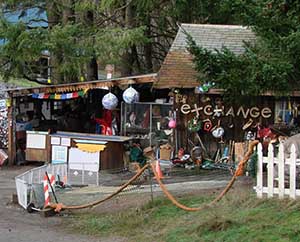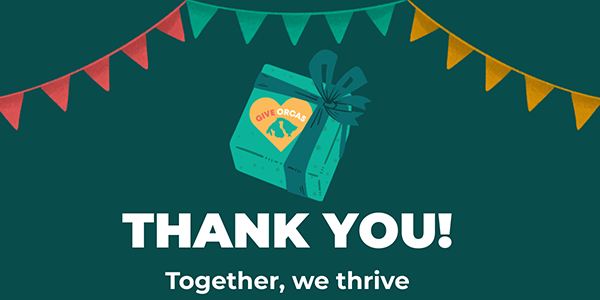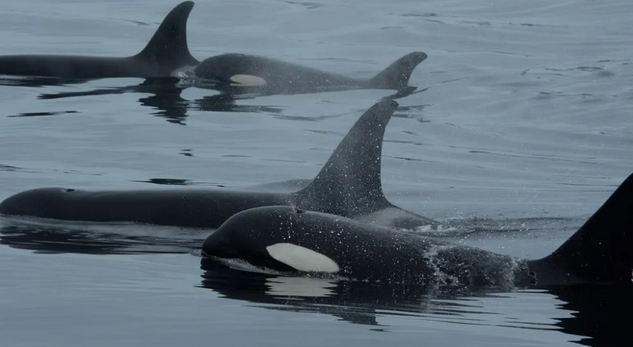— from Pete Moe, Orcas Recycling Services —

The decades-old Exchange building on the county-owned property of the Orcas Transfer Station. The building burned in February 2013.
Orcas Recycling Services (ORS) is the non-profit organization that has always operated The Exchange, and for the past year and a half has operated the Orcas Island Transfer Station (OITS). It is our primary goal to rebuild The Exchange reuse center as soon as practically possible.
We are currently considering the purchase of property near the Transfer Station that could become a new Exchange reuse center in a matter of months.
We have asked for your input, and received many questions about this plan from the community, both electronically and at a community forum we hosted in December. The following FAQ was developed from those questions.
Where is the property located?
5320 Orcas Road. Next door to the “Old Trout Inn”. Many will recall it is the former home of Matthew Maher’s business “Stem”. We refer to it below as the “Carlson Property”, as has been owned for many years by the Carlson Family.
Are you going to move the Transfer Station?
Absolutely not. Nor would we do any recycling on the Carlson site. The Carlson property would be a re-use center exclusively.. It is a large piece of land at 35 acres, and we are interested in composting and other community agricultural projects that could take place in the future furthering our Zero Waste mission and enhancing local sustainability and responsible stewardship.
Your fundraising target for this project is $500,000. How did you arrive at that number?
This was a rough estimate that included the total cost of the property, an estimate to upgrade the building to code, and some start-up capital.
Why would you not just re-build the Exchange where it was?
We believe that owning our own facility is in the best interest of The Exchange vs. building on a parcel we do not own. There are many other factors that make the Carlson option a good opportunity: Ability to open faster, more space, opportunity for other agriculture-based community projects, and opening up space at the transfer station for greatly expanded recycling to further our Zero Waste mission. Having reuse, recycling, and garbage disposal on a single site is convenient. However we don’t believe that moving The Exchange down the road a mile and-a-half will hinder its success.
How big is the existing site for the Exchange, and is that big enough? What are the limitations to expanding that site?
The site of the old Exchange, at the Transfer Station is 0.9 acres. However much of that will be used up by new roads and parking. The Carlson property is 35 acres, with potentially between 2 and 5 acres available for light industrial use (depending on County determination). That leaves between 30 and 33 acres available for composting and other agricultural projects.
Will the rules of Exchange be the same as before?
Our intent is to keep the “pay what you can” model that was widely appreciated at the old Exchange. However as a true 501(c)3, we can now offer tax deductions for more valuable items Some of these more valuable items may have price tags or “suggested donations” attached to them.
What makes you think that this new property would fast-track the Exchange?
Unlike the County property where the old Exchange was, the Carlson property already has a building and utilities in place. While significant upgrades to both will be required, we are confident we can open far sooner than if we built a similar facility at the OITS.
ORS has said that moving the Exchange would improve recycling at the transfer station. How?
The benefit of sorting is that when recyclables are separated they have greater value. We can lower the price of recycling to those who separate their recycling, as they do currently on Lopez. To do this sorting effectively we need space. Ideally we would have a covered, level area for bailing and storage. The perfect spot would be the old Exchange site because it would allow easy mechanical access to-and-from the Z-wall, were the sorting will take place.
ORS received a County grant to upgrade the Transfer Station. What will happen to those funds?
In 2014 we received a $48,000 grant from the County to upgrade the traffic flow at the OITS. By contract, we are required to do this work—and we will. In fact, that project has already begun. New roads have been designed and engineered as per our Master Plan, and will hopefully be built this spring. The grant is called a PFFAP, or 0.9% Grant. These funds cannot be used for anything but the construction of the new road at the OITS.
I heard that there are zoning/land use issues with the new site.
There are. The zoning on the Carlson property is Agricultural. However the area where the buildings are has been grandfathered light industrial, and has been used that way for decades. We believe that we can make a good case for The Exchange and be a good neighbor to the surrounding properties. We look forward to upcoming discussions with the County Building Department on this.
I heard there are environmental concerns.
There are. The industrial nature of the work done there over the years has left a certain amount hazardous materials in the soils. We are currently studying the extent of the contamination. However we believe there could be no better steward for a remediation program than ORS/The Exchange. We might be able to get grants for the cleanup.
How long would it take to determine what clean up would be necessary to have a healthy site for composting and a community garden?
We are pretty certain that the vast majority of property is clean and could support farming, gardening, or composting. The potentially contaminated portion is around the buildings. No composting or food gardening would happen there. We expect completion of our Phase One Environmental review in early January; and we will determine, based on that report, how we move forward.
Does ORS/The Exchange plan to use funds generated by the OITS to fund the Exchange?
No, nor will the reuse business ever fund the Transfer Station. While both businesses will be operated under one corporate umbrella, we believe both are self-sustaining and will stand on their own.
How does having an Exchange off site or on site effect staffing? What are the advantages of having staff at the existing location compared to spread out at the new location?
We believe that there would be little difference in staffing. The Exchange, in either location, will have 2-4 employees. Employees at the transfer station will continue their dedicated jobs. These are net new jobs that we will have created.
Has the County blocked or interfered with the opening of a new Exchange?
No. The County, and especially Councilman Rick Hughes, have been very helpful to ORS/The Exchange all along. However things move slower than one might wish when you play by the book. We will be held to all the same rules codes and standards that any business would be.
How can I help?
We would love your help! We keep a detailed database of volunteers, their skills and interests, and we would sign up anyone who is interested in helping. If you are interested, please shoot us an email at info@exchangeorcas.com with your contact info, and your skills. We can use you– everything from artists to builders to farmers to fundraisers to lawyers to engineers to scientists!
**If you are reading theOrcasonian for free, thank your fellow islanders. If you would like to support theOrcasonian CLICK HERE to set your modestly-priced, voluntary subscription. Otherwise, no worries; we’re happy to share with you.**









Among the “environmental concerns” which could (must?) be included in any analysis of the Carlson Property is the fact that over half of the “2 to 5 acres” which has a history of commercial usage is now encumbered by the wetlands buffers of our recently adopted Critical Areas Ordinance.
As for the “grandfathered light industrial” land use, what is “grandfathered” is the continuation of a now long-gone logging operation. I am willing to be wrong, but I believe that any application for a different commercial or industrial use will be considered on its merits and not in relation to a previous, abandoned use.
“That leaves between 30 and 33 acres available for composting and other agricultural projects.”
Composting on a commercial scale is not agricultural. Having lived near (2 miles) a large composting operation I can tell you that it is one of the foulest smelling things around. There were/are constant legal battles about the smell from surrounding areas, at huge expense to both sides. If the composting will need anywhere near 30+ acres I’m glad I don’t live anywhere near it.